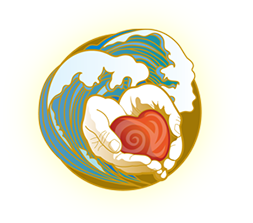“A healthy human being is characterized by a wider and wider capacity to experience [with presence] emotion and blends of emotion.” ~Dr. Keith Witt, Integral Psychologist

This assertion from Dr. Witt may sound simple, but I believe it to be extremely profound in its implications. In fact, I think it is key to understanding truly transformational healing and how it occurs. Dr. Witt and Jeff Salzman discuss this topic in Jeff’s Daily Evolver podcast episode entitled, “Transforming Trauma Into Power.” (I highly recommend listening to it in its entirety.)
What does it mean to have a wider and wider capacity to experience and be present with emotion? What is so challenging about it? And why is this capacity so essential for transformational healing?
Having the capacity to be present with our emotions means we have cultivated the ability to turn towards our unwanted feelings, pain, and other undesired material, as opposed to turning away through denial, distraction, or dissociation. One of the reasons this is so difficult is it goes against our most basic survival and instinctual drives, such as our ability to dissociate when experiencing a traumatic event. If we have used a response such as dissociation in the past and it worked to get us through a traumatic situation, our system will remember this success and use dissociation over and over again whenever it perceives danger (real or not). And this response will happen automatically and often unconsciously. That is, most of us are not even aware when we are dissociating.

Another reason it is difficult for us to turn towards our pain is we are often taught that certain emotions are bad and others are good. When we judge our emotions (and therefore ourselves) in this way, we tend to suppress those emotions which we have labeled as wrong. We do this in a variety of ways. We might dissociate (as already discussed above), go into denial, or use distraction (food, TV, drugs, alcohol, shopping, etc.). We might also shame ourselves in an attempt to control our feelings.
Why is it important to build the capacity to turn towards our pain? When we suppress our emotions or are otherwise unable to be present with our painful experiences, symptoms will eventually arise such as anxiety, panic attacks, depression, psychosis, physical & immune system ailments, and in cases of extreme trauma, PTSD symptoms. The way to truly heal is to turn toward our pain and be present with the associated emotions and sensations. If we are able to meet our pain with compassionate understanding and radical acceptance, the energy of the held trauma naturally begins to metabolize, integrate, and heal.
One way to be present with our painful experiences is through what is called resourcing. This is a way of holding a resourced or healthy, powerful feeling in the body simultaneously with a challenging feeling in the body. Holding the two together in this way allows for integration and healing. Dr. Witt describes a simple practice in the podcast (at around the 36-minute mark) which you can try today that utilizes this principle.
I love what Jeff Salzman said when he describes this process for himself: “Whenever I find myself in a depression or anxiety or an anger vortex, I say, ‘This is good news! Here I have this ball of energy, and I have the opportunity to actually turn towards it and move into it.'” It is that willingness and that capacity to “turn towards” that results in growth and healing. It’s not just that you metabolize the experience and now it’s no longer a “block” or no longer causing symptoms. It’s that you actually heal with a big “H,” meaning you grow and you evolve. And that, I believe, is an important part of what life is all about.
Visit Penny’s website to learn more about her and her offerings: http://pennyheiple.com

